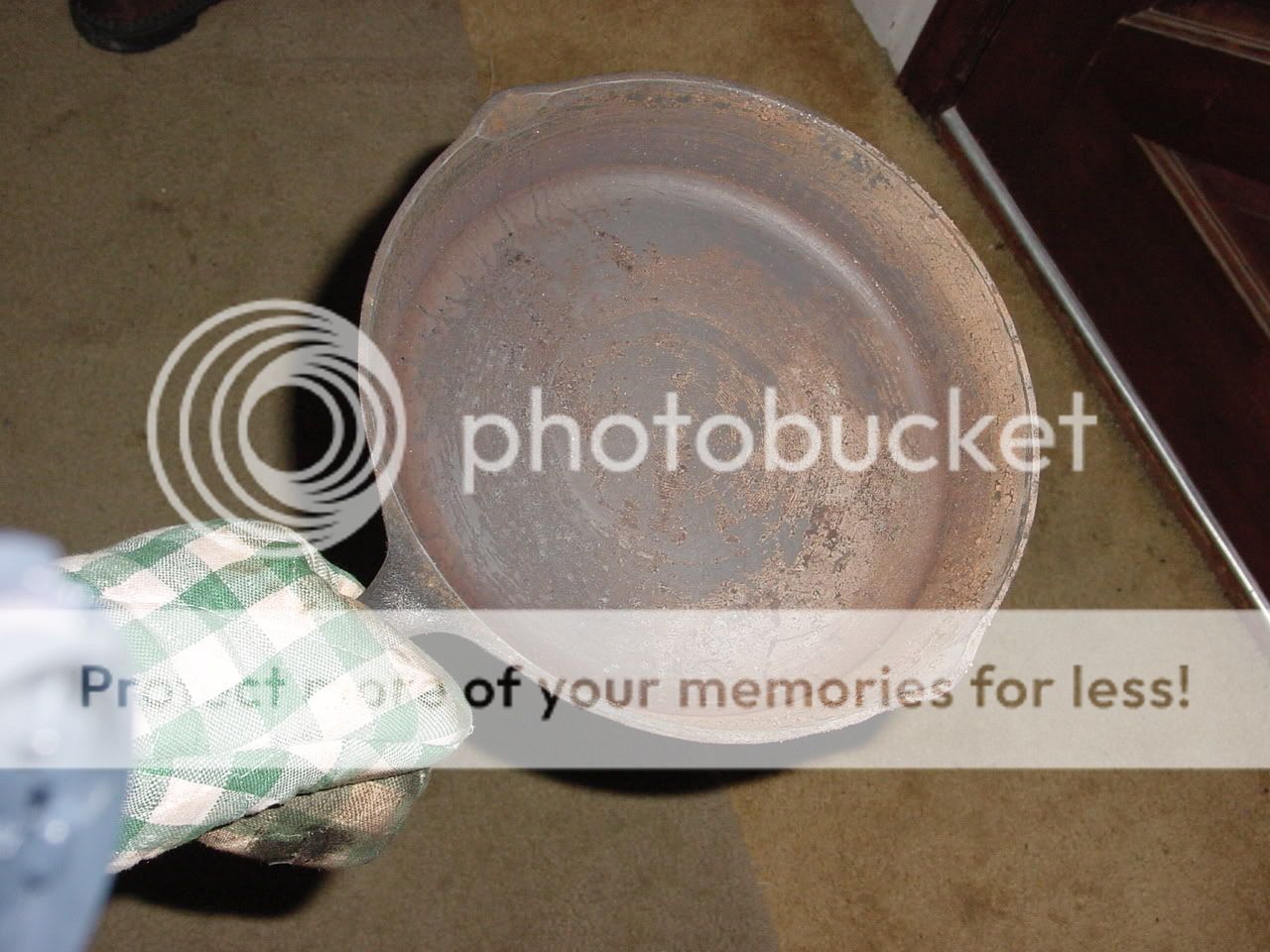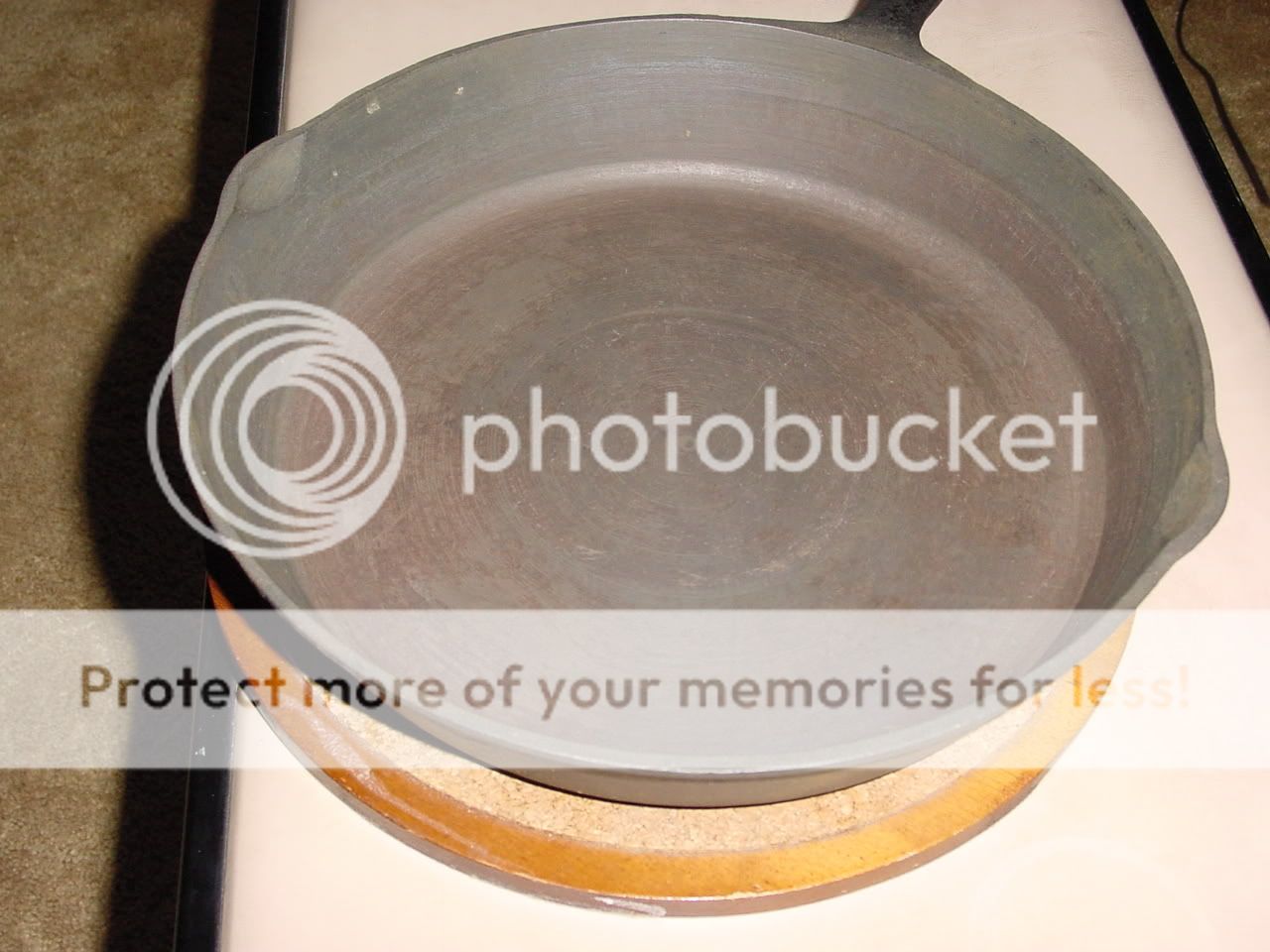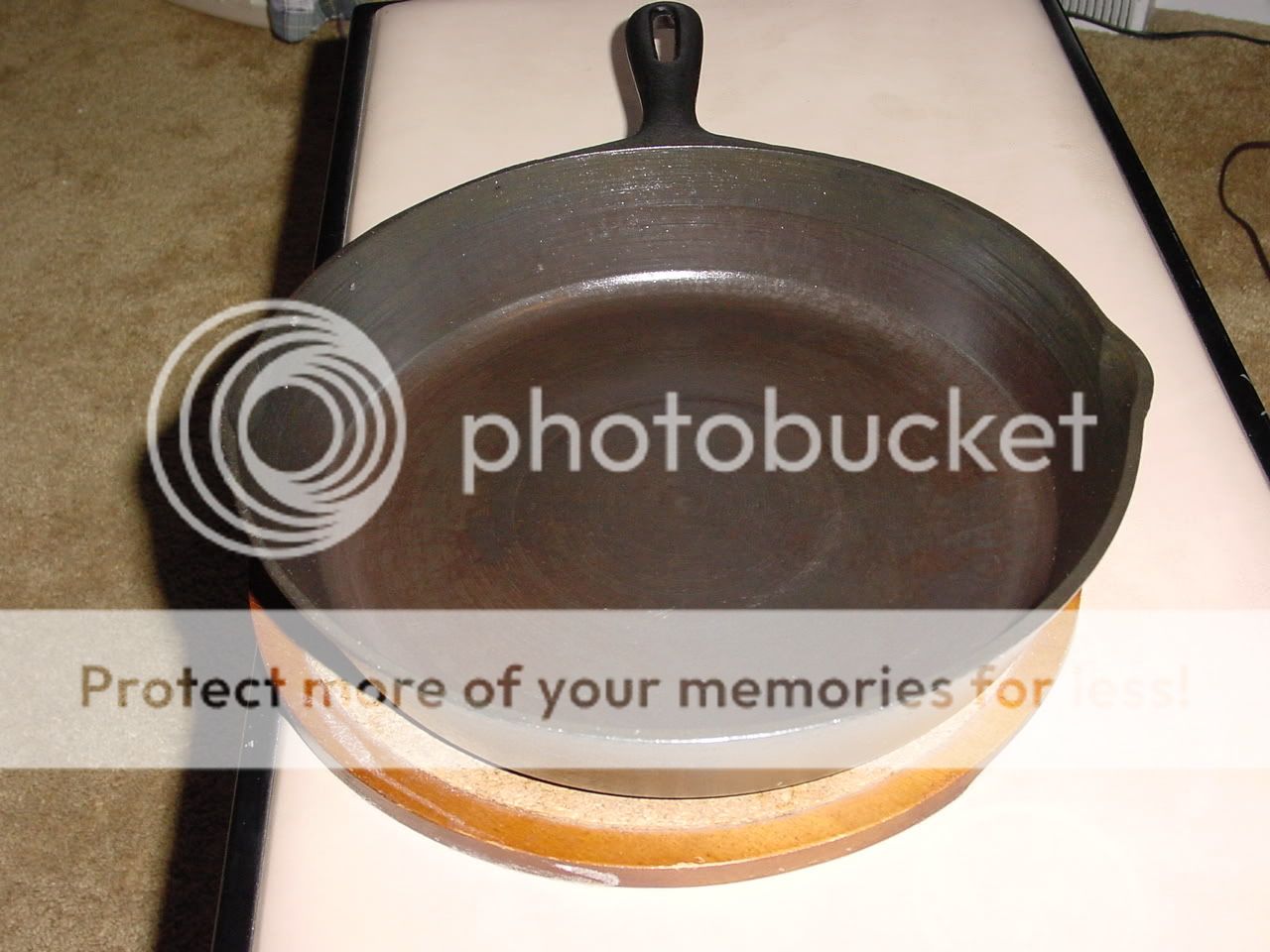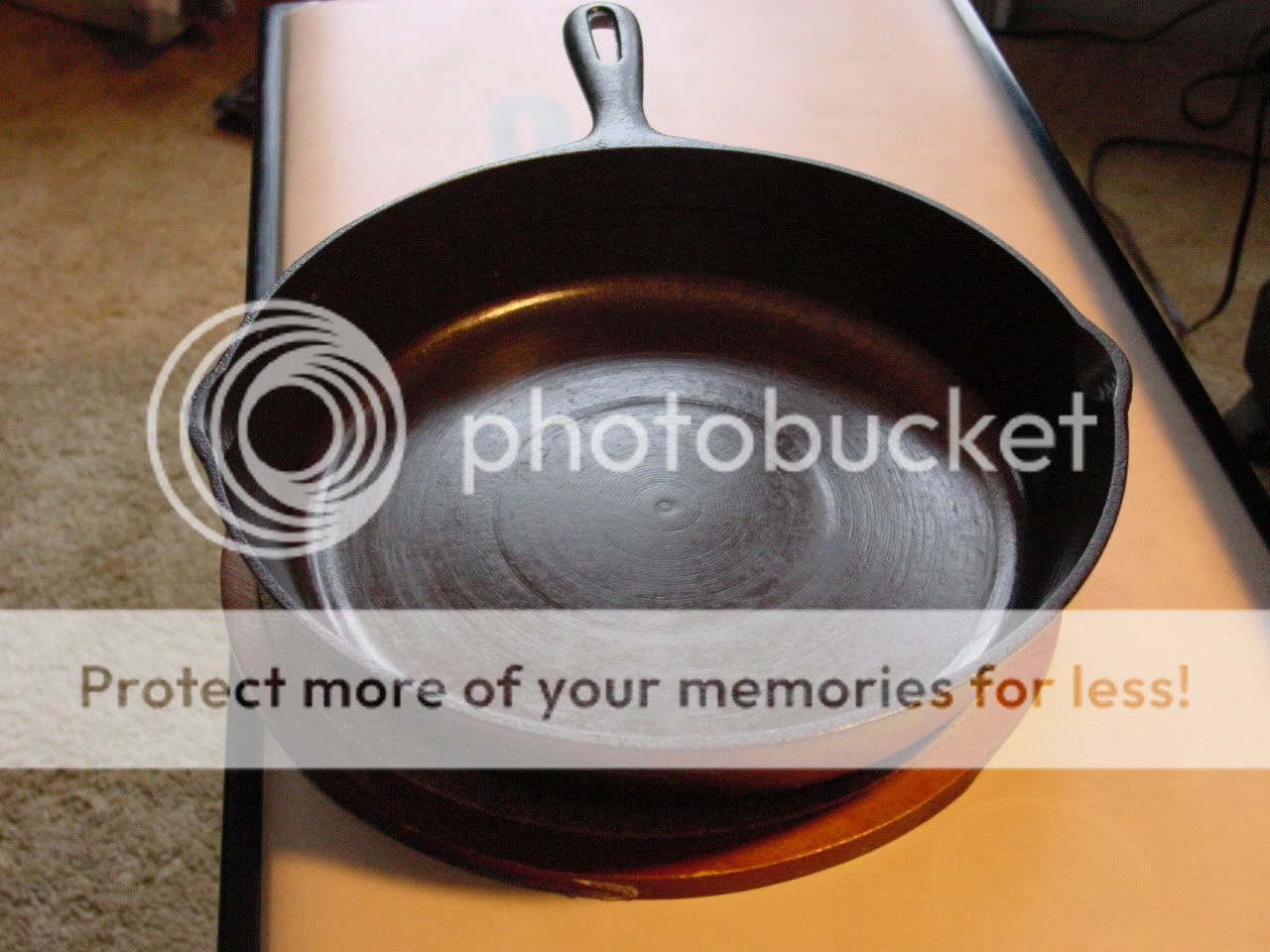I found this skillet at my Mom's and it had a bit of rust on it. Searching the net for how to rescue it left me w/ several opinions. I ended up scrubbing it w/ SOS, coating w/ crisco, and heating it in the oven to re-season it.
I put it away and forgot about it but now I want to use it but it still looks "iffy" to me.
Rereading searches tells me not to use SOS pads. Some say to take a steel brush and start over?
I picked up this brush to throw in my cordless drill and have at'er.
Good idea? Bad idea? Anythougts on how this thing looks?
Maybe it's fine as is and doing a few batches of bacon will help speed things along?
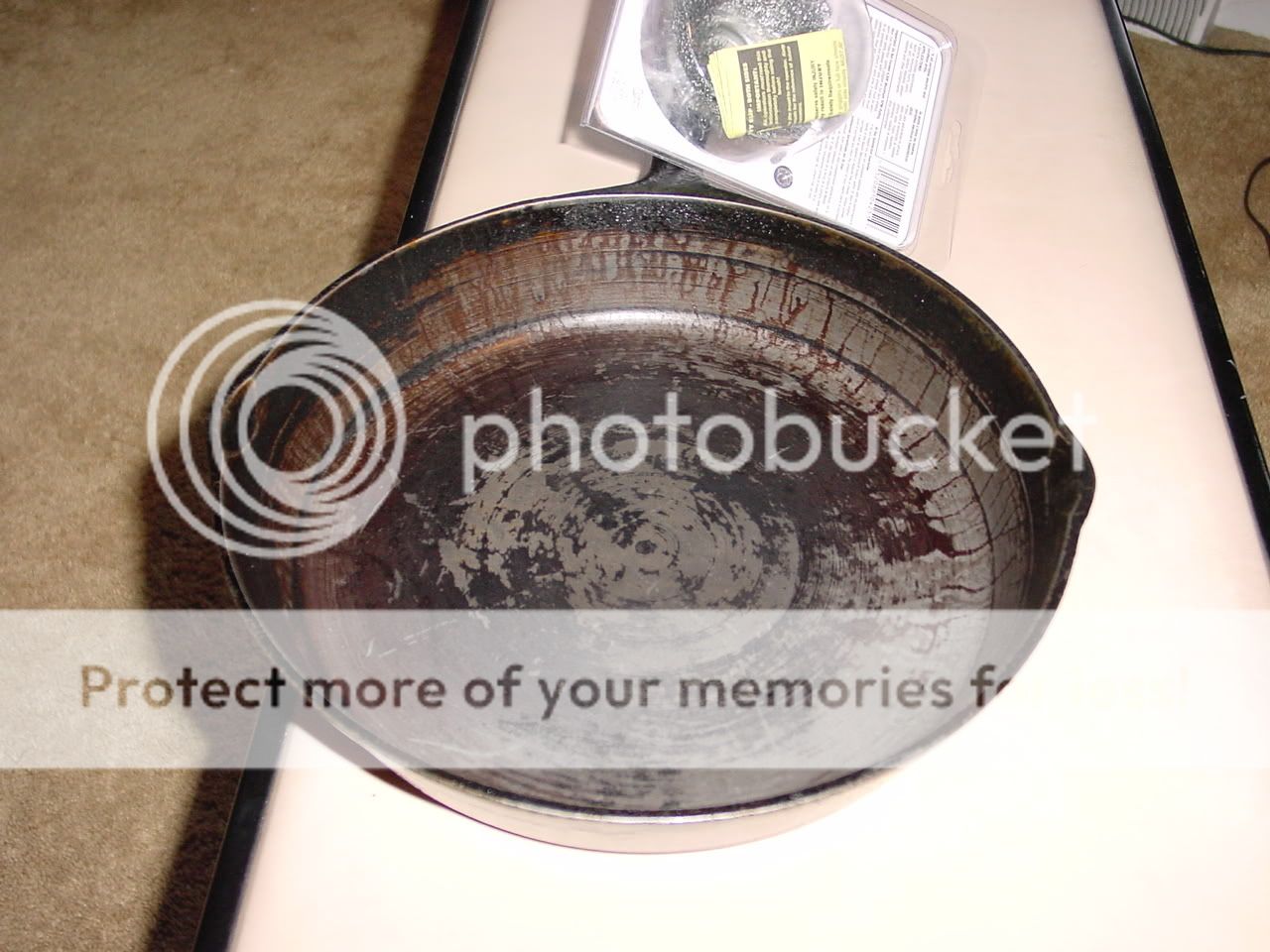
I put it away and forgot about it but now I want to use it but it still looks "iffy" to me.
Rereading searches tells me not to use SOS pads. Some say to take a steel brush and start over?
I picked up this brush to throw in my cordless drill and have at'er.
Good idea? Bad idea? Anythougts on how this thing looks?
Maybe it's fine as is and doing a few batches of bacon will help speed things along?

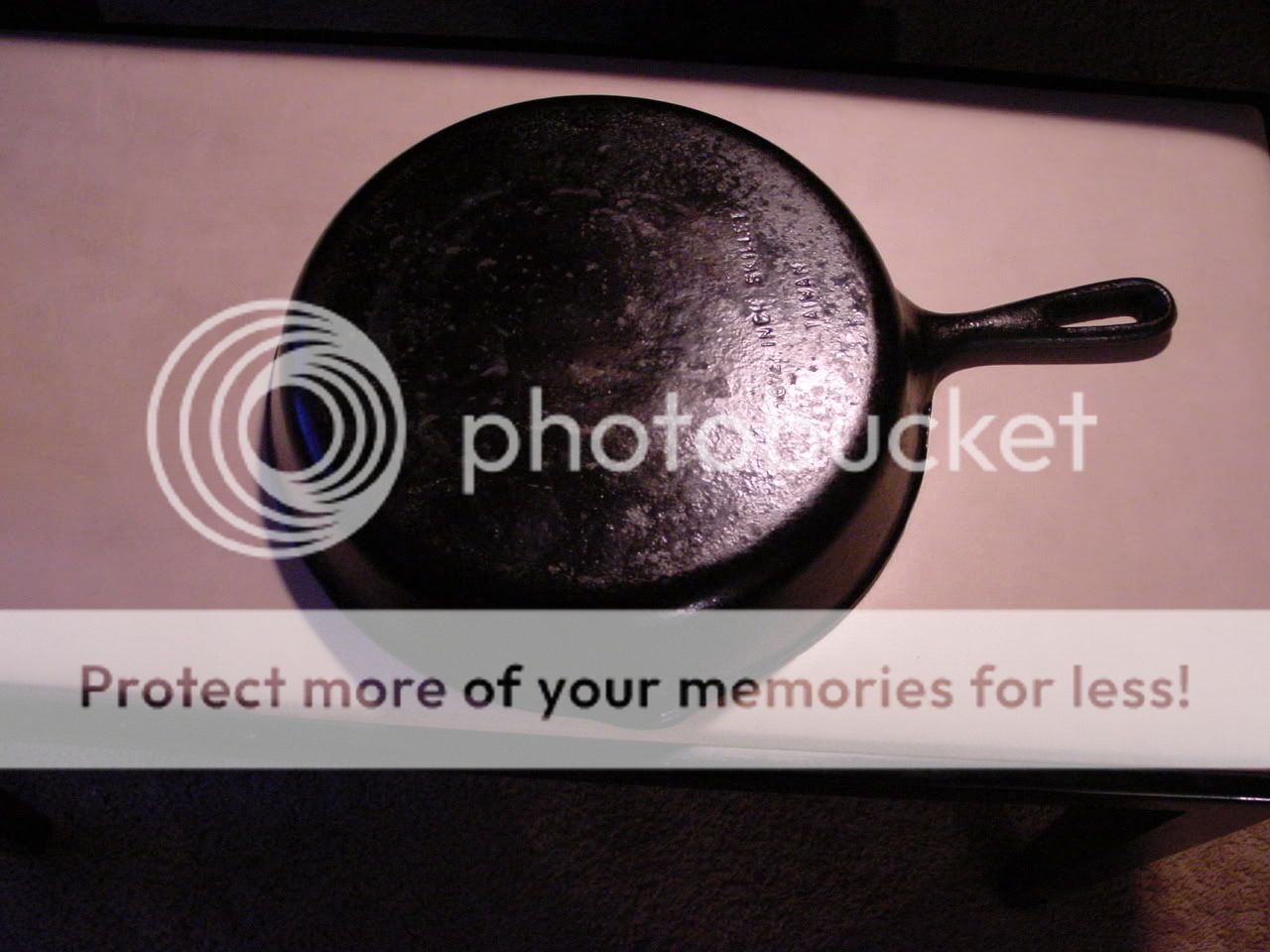

 (Carbonized)
(Carbonized)